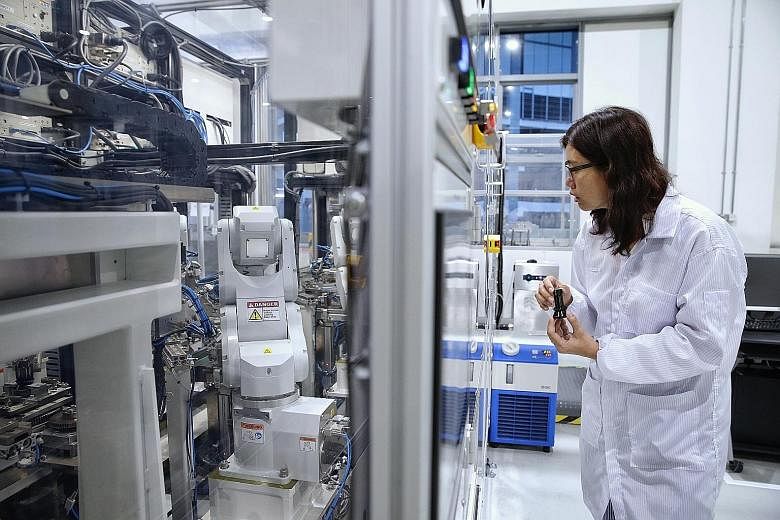Local factories defied the experts to lift output markedly last month and confound expectations that the manufacturing sector is slowing.
But while the strength of the figures out yesterday may have taken economists by surprise, they still tip that the pace will ease, weighed down by moderating semiconductor demand and the high base of the electronics cluster last year.
There is still plenty of head-scratching going on, however, with observers trying to reconcile data showing that electronics production continues to expand while electronics exports have contracted in the past few quarters.
Maybank Kim Eng economists Chua Hak Bin and Lee Ju Ye said they remain "somewhat perplexed" about this persistent divergence.
UOB economist Francis Tan agreed: "There is no reason to keep producing electronic products... without exporting them."
Manufacturing output grew by an impressive 9.1 per cent last month, slightly higher than economists' expectations of 8 per cent, according to Economic Development Board data yesterday. This beat March's revised growth of 6.1 per cent.
There was growth across all manufacturing clusters, with chemicals leading the pack at 12.4 per cent with electronics on 11.3 per cent.
-
9.1%
Growth in manufacturing output last month, slightly higher than economists' expectations of 8 per cent, according to EDB data.
Last month's numbers were also helped by the rebound in the volatile biomedical sector, which clocked growth of 8.2 per cent after two consecutive months of decline.
Precision engineering's output stayed healthy at 7.2 per cent, while transport engineering grew 8.3 per cent on the back of a pick-up in the aerospace and land segments, which offset the continuous decline in marine and offshore.
General manufacturing also swung into expansion mode last month with expansion of 3.3 per cent after two months of decline.
Despite last month's robust showing, most economists do not expect the momentum to be sustained.
DBS' Mr Irvin Seah noted: "Manufacturers are facing capacity constraints in the near term, which will continue to keep output growth in the single-digit range.
"Moreover, growth will also likely trend lower gradually given the high base in the coming months."
The mixed data emerging in recent months has also left economists debating the sector's outlook.
Declining electronics exports do not quite gel with how industrial production is still powering along and why the Purchasing Managers' Index (PMI) - an early indicator of factory activity - has stayed in expansionary mode, economists said.
Maybank Kim Eng's Mr Chua and Ms Lee said: "The divergence in electronics exports and production could be in part because orders, while being booked in Singapore, are produced and shipped from outside, for example Penang."
They added that the tight electronics manufacturing capacity here could have led to a shift in orders to factories overseas. "Correlation between electronics manufacturing and exports may return when orders cool off or production capacity expands," Mr Chua said.
Likewise, UOB's Mr Tan is cautious about the picture painted by the mixed data and expects growth to moderate over the coming quarters. He noted that the monthly PMI showed that electronics purchasing managers have collectively reported the highest levels of inventories since April 2011, while new orders have been on a downward trend since Nov 7.
Even if manufacturers are keen to invest and ramp up capacity, there are also emerging risks.
DBS' Mr Seah noted: "Besides the opportunities arising from synchronised global growth, manufacturers would have to weigh the risks from heightened trade protectionism, financial market volatilities and higher funding costs."


